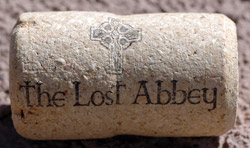In some of the many discussions about Session Beers (like here and here) the fact that Utah brewers make a range of great beers containing less than 4 percent alcohol by volume usually comes up.
So it’s nice to see them get a little credit in Sunday’s New York Times: “Brew Pubs Gain an Unlikely Following in Utah.” But — whoa! — when I read this paragraph I don’t know if somebody got confused converting alcohol by volume to alcohol by weight (4% abv equals 3.2% abw) or perhaps had a few beers first.
Utah still has quirky alcohol laws, including one that sets a limit of 3.2 percent alcohol — a little more than half the amount standard in most beers around the world — for beer sold on tap.
Does this mean that Vanessa Chang figures a standard beer contains almost 8% abv?
And how strong would a Session Beer be? Six percent? Lew, there’s work to be done.
 I do like the sound of bottle of beer being uncorked, the pop followed by the lively sound of carbonation, or perhaps . . .
I do like the sound of bottle of beer being uncorked, the pop followed by the lively sound of carbonation, or perhaps . . .